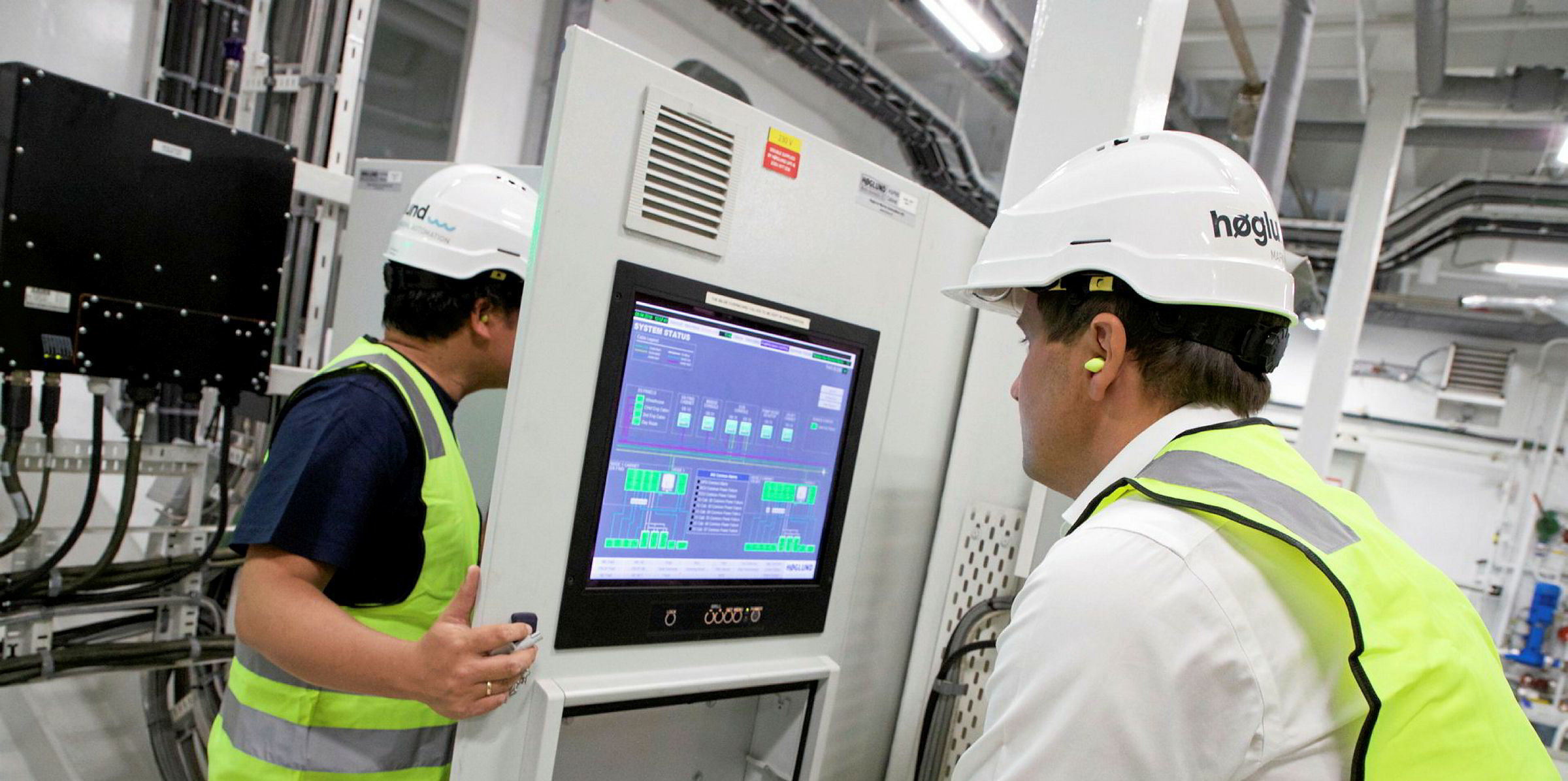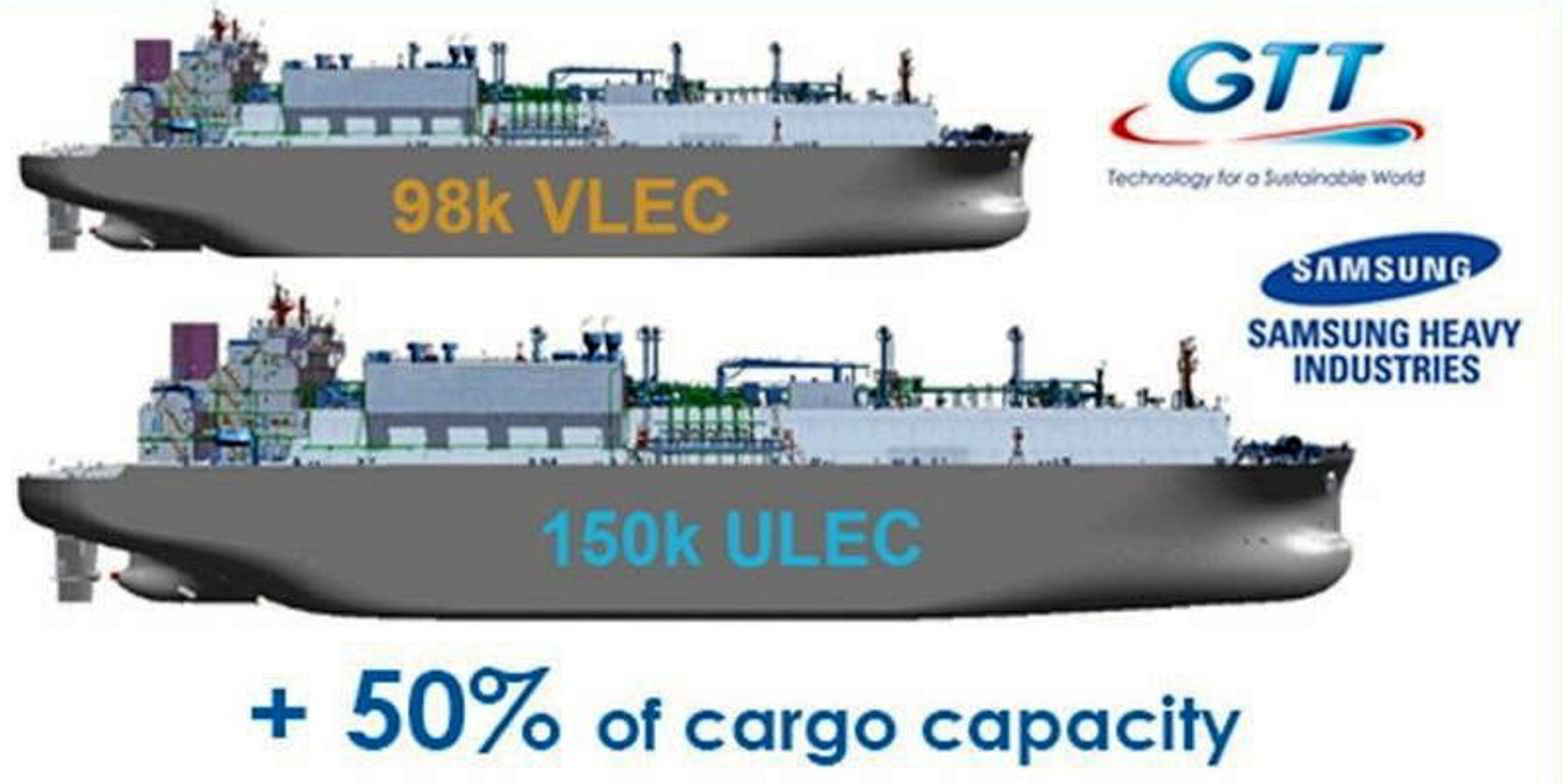Amid the global drive to reduce emissions, carbon capture and storage (CCS) technology is developing at pace. It works by capturing carbon from its sources at industrial sites and processing it into liquefied CO2. This is then transported to a shore-based terminal, from where it is carried in pipes to underground storage locations.
The maritime transport element will soon be a vital part of the CCS chain, adding new technologies to increase the carrying capacity of captured CO2 in a commercially viable way.
Demand for the maritime transportation of liquefied CO2 is set to increase drastically as global CCS chains develop in response to the pressing need to reduce industrial emissions.
To respond to this demand, the carrying capacity for ship-borne CO2 transportation must increase drastically — which brings unique challenges for tank design and cargo handling.
The maximum capacity for shipping liquefied CO2 today is 3,600 cbm, or 1,700 tonnes, in dedicated CO2 tankers. Liquid CO2 is stored and transported at -35C at a high pressure of 15 bar, alongside a safety margin.
This extra accommodation for safety means tanks for transporting liquid CO2 must be much thicker than other tanks. This balance between capacity, tank thickness and size adds a layer of complexity when developing solutions that could scale up existing capacity.

Increasing the size of tanks is challenging, because the thickness needed for the high pressures of liquid CO2 increases the weight and size of the tank.
Expanding the typical mono-lobe tanks for this size and capacity also means vessels need to carry more ballast water to mitigate stability issues, increasing the complexity of design.

Additionally, many safety concerns surround the transportation of CO2. Pressure differences that arise as a result of a leak or fault in the cargo-handling system could result in sublimation of the CO2 to form blocks of dry ice that block safety relief valves. If unchecked, the whole tank could turn to dry ice, posing safety risks.
If escalating the tank size presents challenges, what are the alternatives to scaling up existing mono-lobe designs?
The answer is to bring together automation, gas and hybrid systems expertise, coupled with design and engineering knowledge, to redefine tank design and cargo-handling systems.
Over the past couple of years, our teams of automation, gas and hybrid systems engineers at Hoglund Marine Solutions have collaborated with marine and tank design engineers to develop the gas and on-board cargo-handling systems that would be needed for an 8,000-cbm bi-lobe type-C CO2 storage tank.
This design, which can be integrated into existing tanker designs, more than doubles the existing maximum cargo capacity of 3,600 cbm and exceeds what could be achieved by scaling up a mono-lobe concept.
This bi-lobe shaped tank comes without the size, weight and stability concerns that would come from scaling up a mono-lobe.
At only 37 metres long and 2.4 metres wide, the bi-lobe design in fact assists in supporting vessel stability, in contrast to the added complexities that would arise from a mono-lobe tank of similar size and weight.
The design of the new tank prevents dry-ice formation and allows the CO2 to discharge even in the unlikely event that its two deep well pumps fail. The tanks are insulated with 200mm of sprayed polyurethane to maintain the -35C needed.
As shipping pushes towards a more sustainable future, it must look to expand and build on proven technologies, and work together for a solution that not only supports existing markets, but also represents an asset for the emerging CCS chain in a minimally disruptive way.
Tiago Braz is vice president, product area
energy, at Hoglund Marine Solutions
Do you have an opinion to share?
Email: news@tradewindsnews.com





